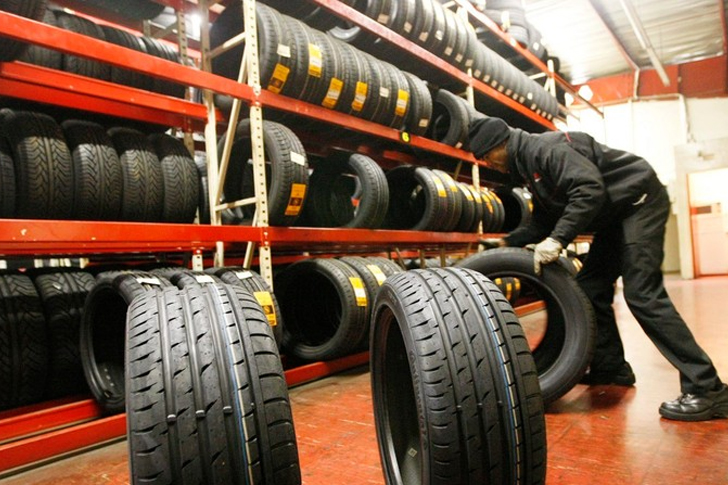Guide to Finding Economically Priced Tires
Finding economically priced tires can often seem like a daunting task. Due to the essential role that tires play in the safety and performance of a vehicle, it’s important not to sacrifice quality for a lower price. However, it’s entirely possible to find good quality tires that won’t break the bank. This guide provides useful tips, backed by facts and figures, to help you make an informed choice when purchasing economically priced tires.

Facts About the Tire Market
Before embarking on your quest for affordable tires, it’s important to understand a bit about the tire industry. Over one billion tires are manufactured annually across the globe, with the U.S. market alone accounting for about 300 million. In terms of pricing, the cost of a single tire can vary significantly depending on the type, brand, and performance features, ranging from as low as $50 to upwards of $200 each. According to industry analysts, tires are expected to continue increasing in price due to rising raw material costs and innovations in tire technology. Understanding these market dynamics can help you set realistic expectations for what you’ll need to spend.
Understanding Tire Types and Their Impact on Price
Tires come in various types designed for different uses and vehicles. The major categories include all-season, summer, winter, and performance tires. Each type has its own pricing spectrum. For instance, all-season tires, suitable for most conditions and the most common choice among drivers, tend to be priced moderately. Summer tires, designed for optimal performance in warm conditions, and winter tires, tailored for cold weather and snow, generally come at a premium. Performance tires, offering enhanced speed and agility for sports cars, are usually the most expensive. Knowing the specific tire type your vehicle requires is key to not overpaying for unnecessary features.
Where to Find Deals on Tires
With a firm understanding of the type of tires you need, the next step is knowing where to find the best deals. Major retailers like Walmart, Costco, and Sam’s Club often have competitive pricing for tires and sometimes offer discounts and promotions that can lead to significant savings. Additionally, these big-box retailers often provide added value through bundled services like free tire rotation, balance, and flat repairs.
Online retailers and tire-specific websites such as Tire Rack, Discount Tire Direct, and Amazon can also offer lower prices than physical stores due to lower overhead costs. These sites often feature user reviews, which can be invaluable in assessing the quality of tires that are also economically priced. When shopping online, ensure that the cost includes shipping or that you’re able to pick up the tires at a local installation center without additional charges.
Seasonal Promotions and Discounts
Timing your purchase can also impact the cost of tires. Tire sales often coincide with seasonal changes. Retailers frequently offer sales in the spring when many drivers are looking to replace their winter tires with all-season or summer tires. Fall can be another good time to shop as people prepare for winter driving conditions. Keep an eye out for Black Friday, Cyber Monday, and back-to-school sales when discounts can reach 20-50% off regular prices.
Loyalty Programs and Memberships for Extra Savings
Another way to save on tires is through loyalty programs offered by auto parts stores and vehicle servicing centers. Members of these programs often receive special offers and accumulate points that can be used towards purchases. Additionally, if you have a membership with a warehouse club like Costco or Sam’s Club, you can access member-only pricing on tires and installation services.
The Role of Warranties and Guarantees
While initial low cost is important, ensuring that your tires come with a warranty can save you money in the long run. Many tire manufacturers offer a warranty that covers defects and wear to a certain extent. For instance, it’s not uncommon to find tire warranties covering 50,000 to 60,000 miles, signifying potentially long-term savings through a prorated replacement if the tires wear out prematurely. Sometimes, retailers also offer their own additional guarantees and insurance for road hazards.
How to Extend the Life of Your Tires
Finally, preserving the lifetime of your tires can indirectly reduce their overall cost. Regular maintenance such as tire rotation, maintaining proper tire pressure, and ensuring vehicle alignment can significantly extend the life of your tires. Most tire professionals recommend checking your tire pressure monthly and rotating your tires every 6,000 to 8,000 miles. These simple steps not only enhance safety but can also save money, optimizingeach tire’s longevity and overall performance.
Conclusion
Searching for economically priced tires doesn’t imply that you must settle for low quality. By understanding your specific needs, staying informed about market trends, and knowing where and when to find the best deals, you can acquire affordable tires that meet your performance and safety expectations. Remember to prioritize quality and warranty coverage to ensure that your investment is protected for years to come. With the right strategy, purchasing tires can be both economical and astute.
Armed with this information, you can confidently navigate the world of tires, ensuring you get the best possible value for your money.







Recent Comments